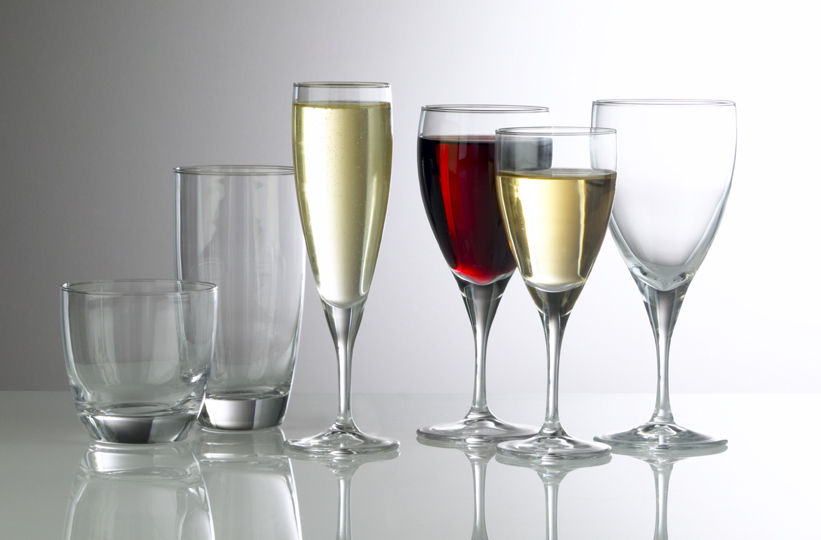A Guide To Glassware

Regardless of the excuse for your party, a suitable set of glassware reflects one’s style and sophistication. Selecting the correct chalices for your guests oozes style and class. The alternative, serving whiskey in a pint glass or red wine in a tumbler, feels somewhat cheap and tacky although with today’s fast paced lifestyle, many of us have let traditions fall by the wayside.
The guide is for anyone seeking to learn or re-fresh their glassware education and re-establish the difference between a cocktail glass and a cup!
For one of occasions or events, hiring glassware is often cheaper than investing in your own set. If you are looking to hire glassware for a party or wedding visit www.cameoeventhire.co.uk.

Whilst most of us could describe a champagne flute, many have never come across its less popular cousin, the coupe. This is because its wide design fell out of favour shortly after they first appeared in the 17th century as it let bubbles escape. The flute, on the other hand, has a slender tulip shape, a thin bowl and a narrow top to keep the wine cool and retain bubbles. The stem, which is grasped by the drinker, means the wine does not warm up as a result of heat from the hand.
The narrow top also serves another purpose, and that is to restrict how much wine the drinker can consume in a single mouthful. Sipping the wine, rather than gulping it back, allows one to savour the flavour and enjoy the champagne for longer.
Today, cocktails are served in glasses of all sorts of shapes and sizes. What we are describing here is the classic martini glass. A relatively shallow, wide bowl on top of a long stem oozes 1920s chic and classic art deco. Again, the stem allows the user to comfortably hold the cocktail without warming it up. Think cosmos, martinis and daiquiris.
Designed to serve long drinks, highballs are actually used by most of us every day for water and soft drinks. These glasses, taller and fairly thin, take their name from the family of drinks that they were designed to contain. These long drinks, like rum and cokes, come served with ice cubes and even sometimes fruit, hence the design.
In addition to longs, highballs are also ideal for serving longer cocktails such as Long Island Iced Teas and Tequila Sun Rises.
Whereas highballs are designed for long drinks, lowballs are ideal for shorts. Think whiskeys and liqueurs server either neat or on the rocks. These glasses are designed to hold far less liquid than their highball cousins.
Often lowballs are extravagantly decorated and characterised by patterns and decoration cut into the glass.
As the name suggests, a sherry glass is primarily designed to host fortified wine. With that in mind, it is acceptable to serve a number of liqueurs and port in a sherry glass, particularly if you have a set you are fond or proud of.
Sherry glasses come in a number of designs, ranging in size and decoration. Find a set you love to complete your set of glassware.
The youngest member of the glassware family, shot glasses first appeared in the early part of the 20th century in the USA. These tiny tumblers are designed to hold just one or two measures of a spirit, which is then slotted back in one, usually at the bar.
Their walls are typically thick, making them easy to grasp and sturdy so that they aren’t damaged when slammed down. Think tequila slammers, Sambuca shots and vodka at the bar!
Finally, the snifter is designed for the sole purpose of holding brandy. It is designed to be cupped and cradled in the hand, allowing the drinker to breathe in the delicate aromas of the brandy he or she is enjoying. The glasses are typically ornate and beautifully decorated.
These special glasses are brought out once the food has been finished, for guests to enjoy brandy and, in the old days, often a cigar. Note, when serving brandy in a snifter, never fill the glass more than 1/3 full.
